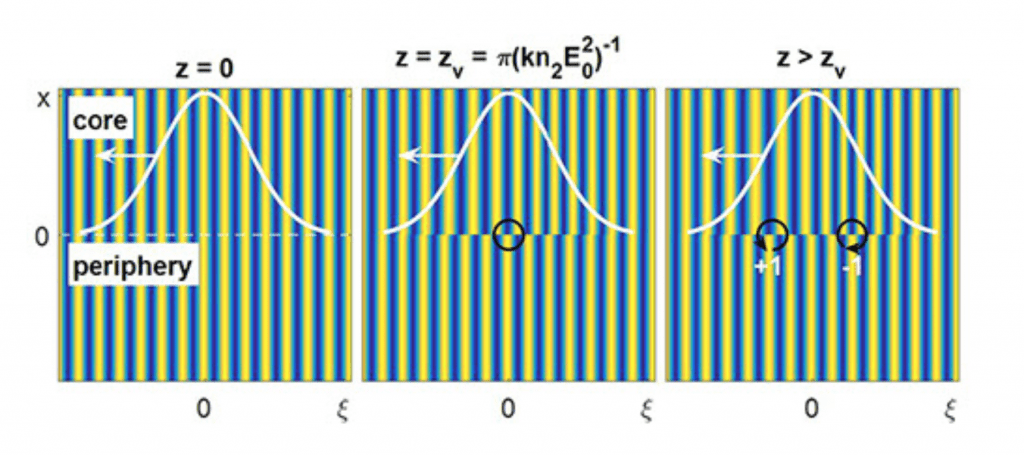We have discovered the formation of “smoke ring” -like vortices that travel along with the laser pulse and control its global energy flow, a universal phenomenon underlying strong field laser propagation.

Our lab both predicted and demonstrated the existence of spatio-temporal vortices (STOVs), a novel type of optical vortex present in all nonlinear optical collapse arrest processes. Prior experimental studies of optical vortices has focused exclusively on “twisted light” beams with optical phase rotation about the propagation axis, Laguerre Gaussian modes being a prime example. Such a vortex can be described entirely as a spatial object in two dimensions and is not strictly embedded in the traveling field.
STOVs, on the other hand, can be tori embedded in the traveling optical field and move with it, as described by our publication in Phys. Rev. X and displayed in simulations on our publications page.
A simple toy model can help explain the origin of STOVs. If a one-dimensional plane wave propagating in air has two areas with a large difference in intensity, the intense half (core) will experience a larger nonlinear index transient than the other half (periphery). This gives rise to phase front shear between the two regions, culminating in a phase defect and field envelope null when the phase difference reaches π. The defect launches two STOVs of opposite phase circulation, as shown below. When viewed in 3-D, this circulation forms a torus or “smoke ring,” as shown at right.

References:
[1] N. Jhajj et al., Phys. Rev. X 6, 031037 (2016).